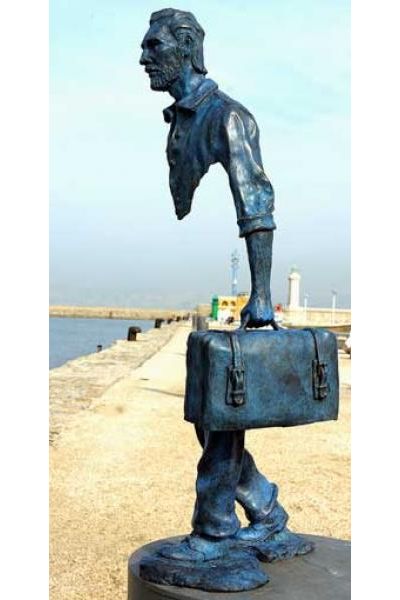I know you might be tired of hearing about immigration. Or if you hear about it you want to focus on the dire situation at hand. I get that, although I'm at a loss personally about what to do short of
supporting legal challenges and supporting l
awyers waiting to represent people at airports.
 |
| Bruno Catalano's immigrant |
But I want to explain, as an immigrant, the dynamics of what we feel right now. You've heard of the zeal of the convert. If you convert to a religion, you had to study it rather than being brought up in it, and you're usually more observant than the non-convert. Immigrants are like converts. Most of us
chose to come to America. We chose it because it was free, welcoming, and gave us opportunities we couldn't have in our countries of origin. In my youth I briefly thought about immigrating to the United Kingdom. While I still love the UK, I recognized then that even if I went to a top school and got a professional degree there, my professional trajectory in the UK would be limited because being so visibly other would be a continuing obstacle. And for more than two decades I've never had a reason to question my choice of coming to the US instead.
But in choosing to come, we also made a choice to leave. And as complex as our relationships to our countries of origin might be, there is loss in what we chose to leave behind. This sculpture describes it more eloquently than I could. And that hole feels larger every time we are reminded that we are not fully accepted in the country we chose.
Every time our loyalty is questioned, despite the active choice we made, somehow it is assumed we are less loyal than those who were born here.
Every time we're questioned even if we were born here, because we don't look like the majority of the people who came before, we must be just a little less loyal. That hole keens and aches. And it makes us question whether we were right to set forth, bag in hand, to this land.
